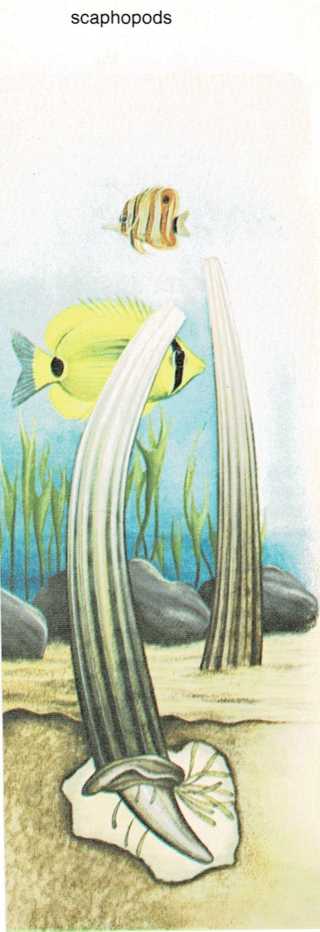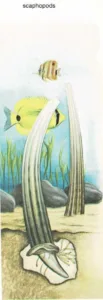
The “spade-footed” ones
If you ever find the shell of a scaphopod [(scaf]{.smallcaps} uh pahd)
on a beach, you may think you’ve found the tusk of a tiny elephant! For
that’s what the shells of most of these little creatures look like. The
shells are hollow, and open at both ends. A scaphopod wears its shell on
its body, like a snail.
The name scaphopod means \”spade foot.” These animals were given this
name because they dig their way through sand with a fleshy \”foot” they
push out of the wide end of the shell. However, because their shells
look like an elephant’s tusk, or like a long, sharp tooth, the animals
are usually called \”tooth shells” or \”tusk shells.”
There are about four hundred different kinds of tooth shells. The
smallest are about half an inch (1.3 centimeters) long. The biggest are
about five inches (12.5 cm) long. Some live in shallow water, near
shore. Others live in the deepest parts of the ocean.
Tooth shells spend most of their lives half buried in sand. They eat
tiny, tiny animals that live in the sand. To feed, a tooth shell sticks
out its \”foot” and stirs up the sand. Small, thin tentacles around the
foot reach out in all directions, feeling and searching.
Along one side of each tentacle there are little hairs that wave
constantly, like grass in the wind. Tiny animals caught in the hairs are
passed along by the waves until they reach the scaphopod’s mouth.
Most tooth shells are white. But some are yellow and some are pale pink.
And one kind is a beautiful dark green.

